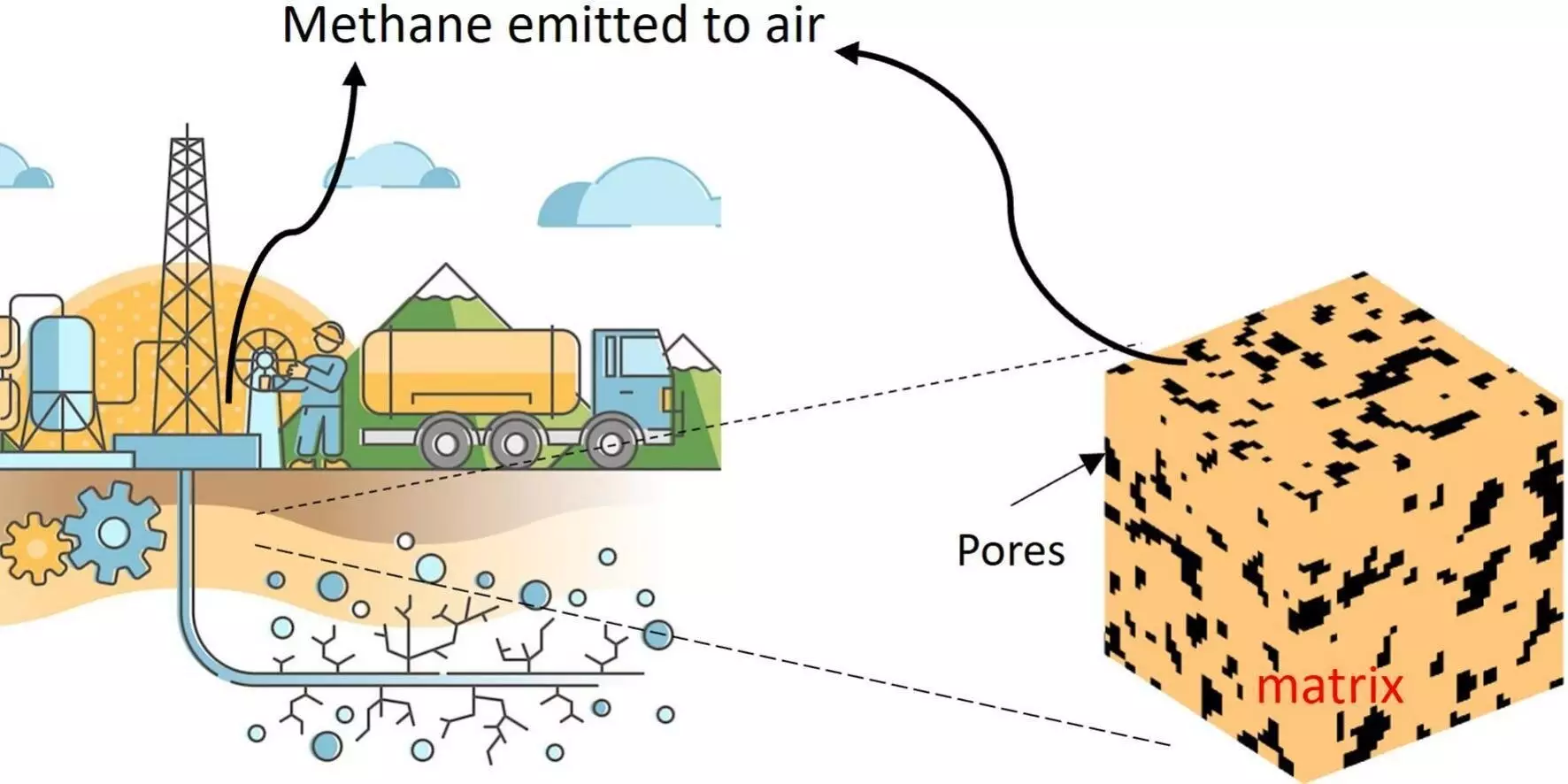The extraction of natural gas from shale formations has revolutionized the energy industry by providing a plentiful and lower-carbon alternative to traditional fossil fuels. However, this process comes with its own set of challenges, particularly concerning methane emissions. Methane, a powerful greenhouse gas, can significantly contribute to global warming. As such, it is crucial to understand the potential sources of methane emissions throughout the lifecycle of shale wells.
A research team led by Penn State researchers has developed a novel tool to estimate the emission potential of shale wells after they are no longer active. This tool, known as a unified gas transport model, integrates data on pore structure within shale formations to predict the movement of methane within the rock. By analyzing shale samples and conducting experiments, the scientists were able to validate their model and provide valuable insights into methane diffusion post-well decommissioning.
The findings of this study have significant implications for the oil and gas industry, particularly in regions like Pennsylvania where shale gas extraction is prevalent. With over 20,000 shale gas wells drilled in the Marcellus shale region since 2005, understanding and mitigating methane emissions is essential. Regulatory bodies should consider implementing long-term monitoring requirements for abandoned shale gas wells to prevent unchecked methane diffusion from these sites.
Methane emissions from shale formations have a higher global warming potential than carbon dioxide, making their mitigation a key priority for the United States and its international partners. Efforts like the Global Methane Initiative aim to reduce global methane emissions by 30% by 2030, underscoring the urgency of addressing methane leakage from sources such as abandoned shale gas wells. Research indicates that proper plugging techniques and maintaining reservoir pressure can be effective strategies for reducing methane emission potential in these wells.
While previous studies have primarily focused on methane emissions during drilling, completion, and operation of shale gas wells, this research sheds light on the importance of considering emissions potential post-well decommissioning. The slow diffusion of methane from shale formations poses a long-term risk of emissions, emphasizing the need for proactive monitoring and mitigation strategies to prevent environmental harm.
The study conducted by the Penn State research team highlights the critical importance of understanding and addressing methane emissions from abandoned shale gas wells. By developing a comprehensive tool for estimating methane diffusion and advocating for regulatory measures to monitor abandoned wells, the researchers have provided valuable insights for industry stakeholders and policymakers. As we strive to transition towards a more sustainable energy future, mitigating methane emissions from all sources, including shale formations, will be crucial in combating climate change.


Leave a Reply